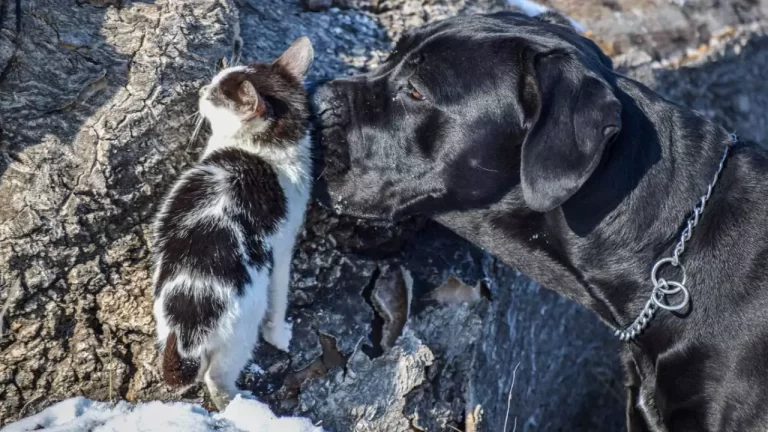Yes, Cane Corsos can be good with cats. However, proper training and socialization is crucial, as Cane Corsos have strong prey drives that need to be carefully managed around feline housemates.
With early and ongoing socialization, plus training using positive reinforcement, Cane Corsos and cats can coexist peacefully. Owners need to be prepared to closely supervise all interactions, monitor body language, and continually reinforce wanted behaviors.
Cane Corso Temperament and Cats
Cane Corsos are large, powerful dogs originally bred to work as guard dogs and hunt wild boar. They are intelligent and eager to please, but have strong instincts to chase small prey.
Proper socialization and training importance
Cane Corsos’ natural drives mean socialization must begin early and be ongoing. Puppies should be introduced to friendly cats and taught to control their impulses around them. Adult rescue Cane Corsos with unknown backgrounds should undergo careful introductions to feline housemates.
Potential compatibility
With proper training and supervision, Cane Corsos can redirect their chase drives and learn to get along with household cats. However, their high prey drive means there is always some risk present. Slow acclimations and preventive measures will be necessary throughout the dog’s life.
Tips for Introducing a Cane Corso and a Cat
Successful introductions between Cane Corsos and cats require time, patience and proper precautions. Here are some tips:
Start with supervised interactions
Keep initial interactions brief and reward calm behavior. Use leashes/gates to control the dog. Correct unwanted chasing swiftly and consistently. As the dog learns appropriate behavior, lengthen the interactions.
Gradual introductions
Start in neutral territory like a yard or park. Exchange scents by rubbing cloths on each animal. Increase contact by allowing the animals to sniff each other through a barrier. Proceed to supervised meetings, keeping the dog leashed and rewarding calmness.
Provide separate spaces
Allow the cat escape routes like cat trees, high shelves and gated rooms. Establish areas just for the cat where the dog is not allowed. This gives the cat rest periods without the dog.
Monitor body language and behavior
Watch for stiff body language, intense staring, chasing, and agitation in the dog. If exhibited, interrupt, redirect and reward alternative calm behaviors. The cat should not show defensive body language like crouching, swishing tail, or aggression.
Conclusion
Cane Corsos have high prey drives that require extensive training and prevention when living with cats. With proper conditioning beginning in puppyhood, Cane Corsos can be taught to peacefully coexist with feline housemates. However, their instincts make it essential that all interactions are closely managed through training, supervision and environmental management. With commitment, a Cane Corso and cat can successfully share a home.





